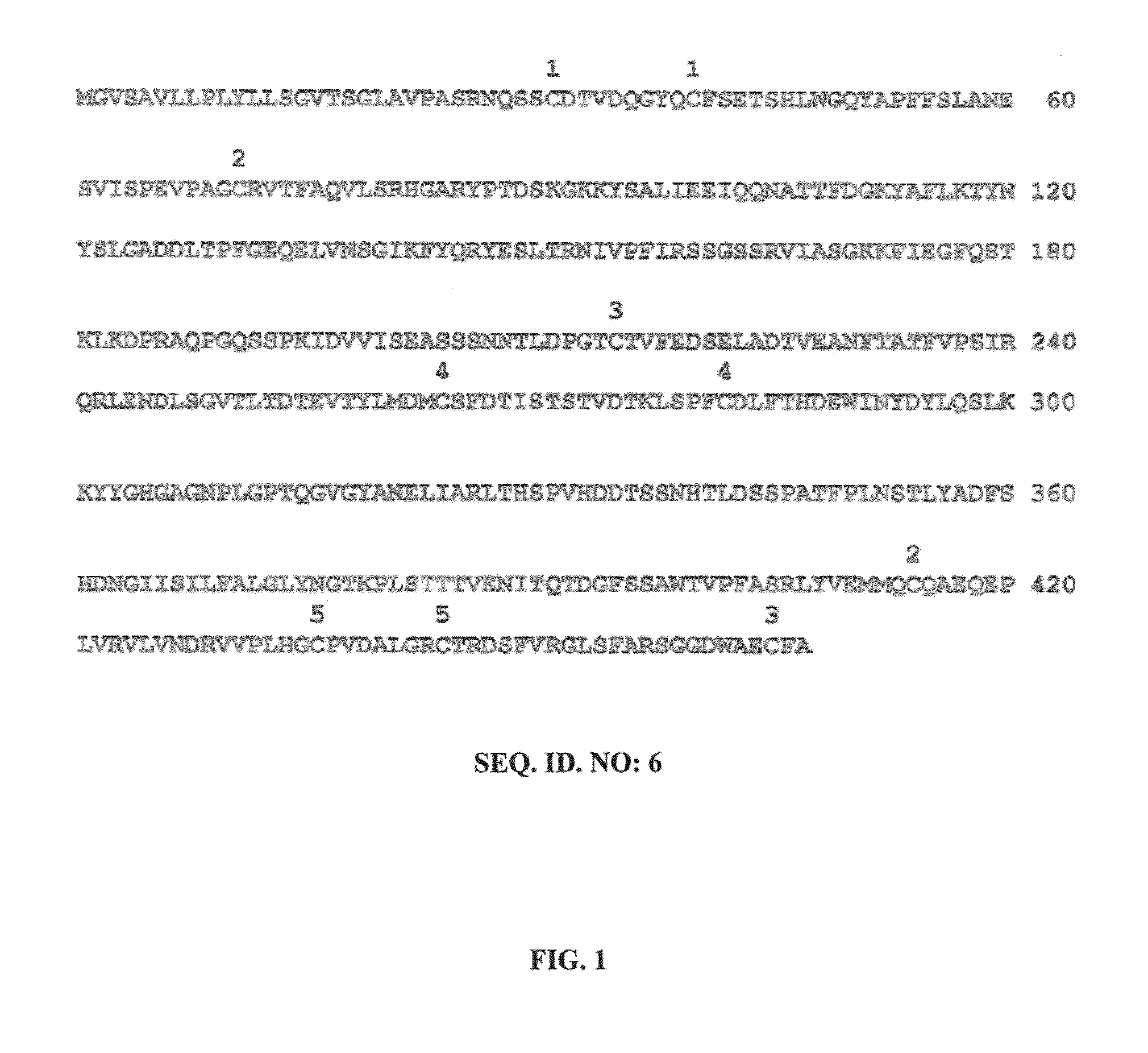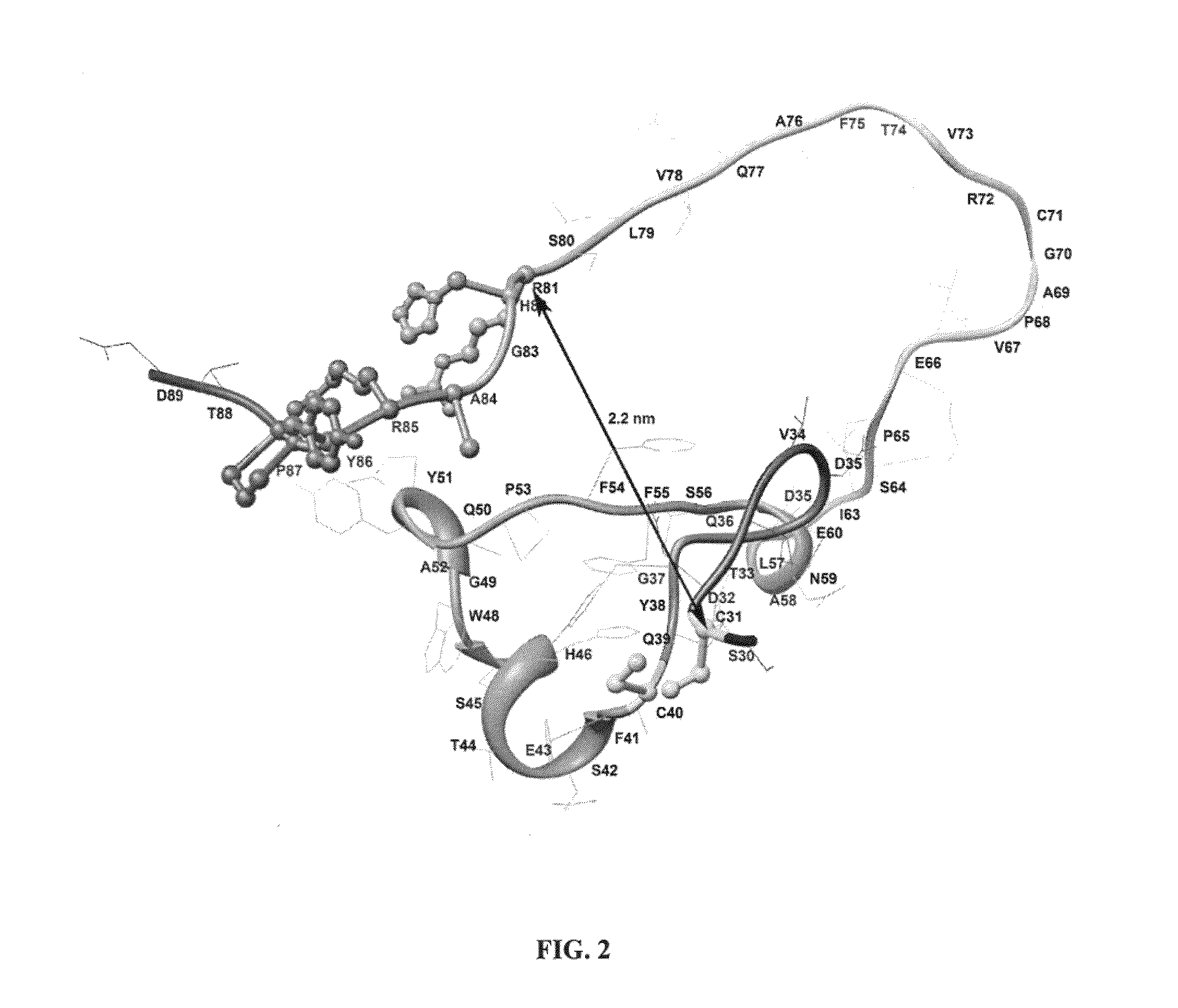Modified Aspergillus niger phytase
a technology of aspergillus niger and phytase, which is applied in the field of modified aspergillus niger phytase, can solve the problems of reducing the specific activity of the enzyme, and reducing the activity of the enzym
- Summary
- Abstract
- Description
- Claims
- Application Information
AI Technical Summary
Benefits of technology
Problems solved by technology
Method used
Image
Examples
example 1
Construction of Single Amino Acid Substitution Mutants
[0036]Plasmid pYPP1, containing the A. niger NRRL3135 phyA gene cloned into the Saccharomyces cerevisiae expression vector pYES2 (Han et al., “Expression of an Aspergillus niger Phytase Gene (phyA) in Saccharomyces cerevisiae,” Appl. Environ. Microbiol. 65:1915-1918 (1999), which is hereby incorporated by reference in its entirety), was employed to generate the mutations. Oligonucleotides were synthesized to generate site specific mutations at substrate binding sites described in Table 1. The phyA mutants in pYPP1 were constructed using the Gene Editor in vitro Site—Directed Mutagenesis System according to Mullaney et al., “Site-Directed Mutagenesis of Aspergillus niger NRRL 3135 Phytase at Residue 300 to Enhance Catalysis at pH 4.0.” Biochem. Biophys. Res. Commun. 277:1016-1020 (2002), which is hereby incorporated by reference in its entirety. The coding region of the pYPP 1 mutant construct was amplified by PCR using two primer...
example 2
Transformation and Protein Expression
[0039]The pGAP vector containing phyA mutant gene (10 μg) was linearized by restriction enzyme BamHI and transformed into Pichia pastoris X33 by electroporation using ECM 600 Electro Cell Manipulator (Gentronics, Inc., BTX Instrument Division, San Diego, Calif.). The transformed cells were plated in YPD agar (1% yeast extract, 2% peptone, and 2% dextrose) plus zeocin (100 .mu.g / ml) and incubated at 30° C. for 3 days. Single colonies of the transformants were selected, inoculated into YPD media, and incubated at 30° C. for 2 days for phytase expression. Phytase activity of the culture supernatant was measured to screen for high phytase activity-producing transformants or BMGY / BMMY medium for yeast and at 25 μg mL−1 to LB for E. coli.
Protein Expression
[0040]Recombinant yeast strain of P. pastoris X33 was used to express proteins identified in Table 1. The pGAP vector containing the phyA gene was linearized by the restriction enzyme BspHI and trans...
example 3
Phytase Purification
[0041]A 500 ml crude culture filtrate of each mutant strain was used to purify the genetically altered phytase. The steps used to purify the protein include ammonium sulfate precipitation followed by three chromatographic steps. Adding 2.0 M HCl while mixing gently lowered to the pH of the culture filtrate from 6.0 to 4.6. Ammonium sulfate precipitation of the phytase was achieved first by saturating the crude culture filtrate to 45% and then removing the precipitate, which does not contain phytase activity, by centrifugation. Additional ammonium sulfate was added to the supernatant to raise the saturation level to 90%. The solution was stirred for about 30 minutes at 40° C. followed by centrifugation to remove the precipitated phytase, which was subsequently dissolved in 15 ml of glycine buffer (25 mM, pH 3.5). The traces of ammonium sulfate were removed from the re-suspended phytase solution by dialysis over a period of 4 hours with three changes of glycine buf...
PUM
| Property | Measurement | Unit |
|---|---|---|
| pH | aaaaa | aaaaa |
| temperature | aaaaa | aaaaa |
| pH | aaaaa | aaaaa |
Abstract
Description
Claims
Application Information
 Login to View More
Login to View More - R&D
- Intellectual Property
- Life Sciences
- Materials
- Tech Scout
- Unparalleled Data Quality
- Higher Quality Content
- 60% Fewer Hallucinations
Browse by: Latest US Patents, China's latest patents, Technical Efficacy Thesaurus, Application Domain, Technology Topic, Popular Technical Reports.
© 2025 PatSnap. All rights reserved.Legal|Privacy policy|Modern Slavery Act Transparency Statement|Sitemap|About US| Contact US: help@patsnap.com



